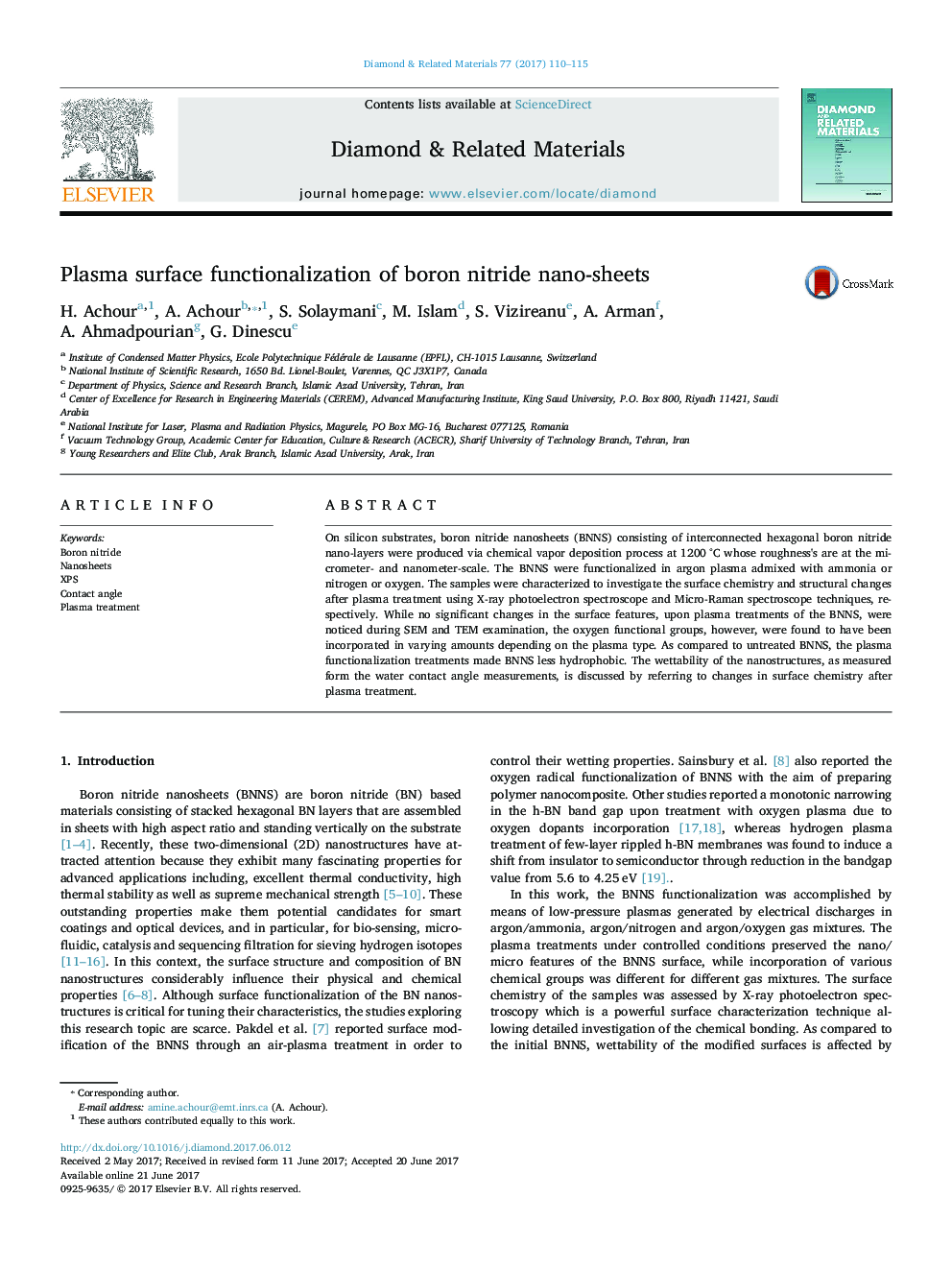| Article ID | Journal | Published Year | Pages | File Type |
|---|---|---|---|---|
| 5000675 | Diamond and Related Materials | 2017 | 6 Pages |
â¢BNNS were functionalized in NH3, N2 and O2 reactive plasmas mixed with argon.â¢Plasma functionalization did not affect surface morphology of the BNNS.â¢XPS analysis revealed varying degrees of oxygen and hydroxyl group incorporation.â¢Water contact angle was reduced from 127 to 99° upon Ar/O2 plasma treatment.
On silicon substrates, boron nitride nanosheets (BNNS) consisting of interconnected hexagonal boron nitride nano-layers were produced via chemical vapor deposition process at 1200 °C whose roughness's are at the micrometer- and nanometer-scale. The BNNS were functionalized in argon plasma admixed with ammonia or nitrogen or oxygen. The samples were characterized to investigate the surface chemistry and structural changes after plasma treatment using X-ray photoelectron spectroscope and Micro-Raman spectroscope techniques, respectively. While no significant changes in the surface features, upon plasma treatments of the BNNS, were noticed during SEM and TEM examination, the oxygen functional groups, however, were found to have been incorporated in varying amounts depending on the plasma type. As compared to untreated BNNS, the plasma functionalization treatments made BNNS less hydrophobic. The wettability of the nanostructures, as measured form the water contact angle measurements, is discussed by referring to changes in surface chemistry after plasma treatment.
Graphical abstractDownload high-res image (117KB)Download full-size image
